
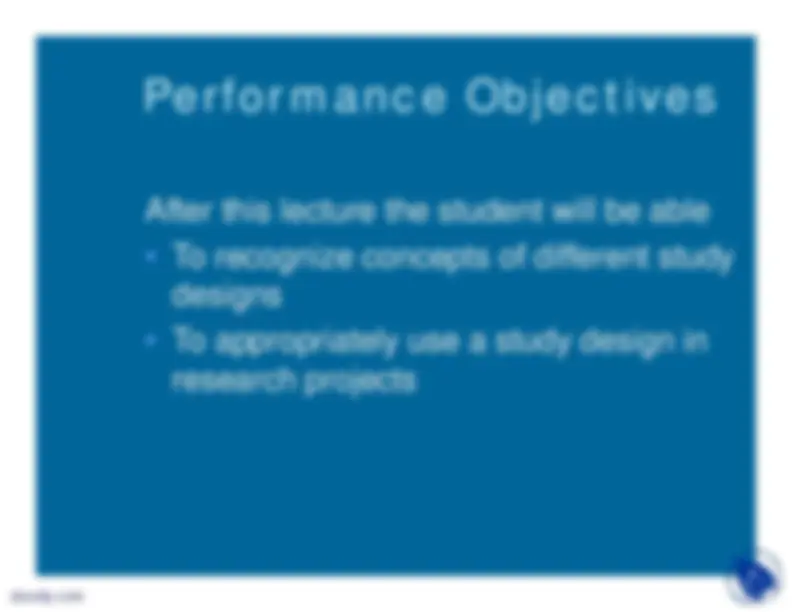
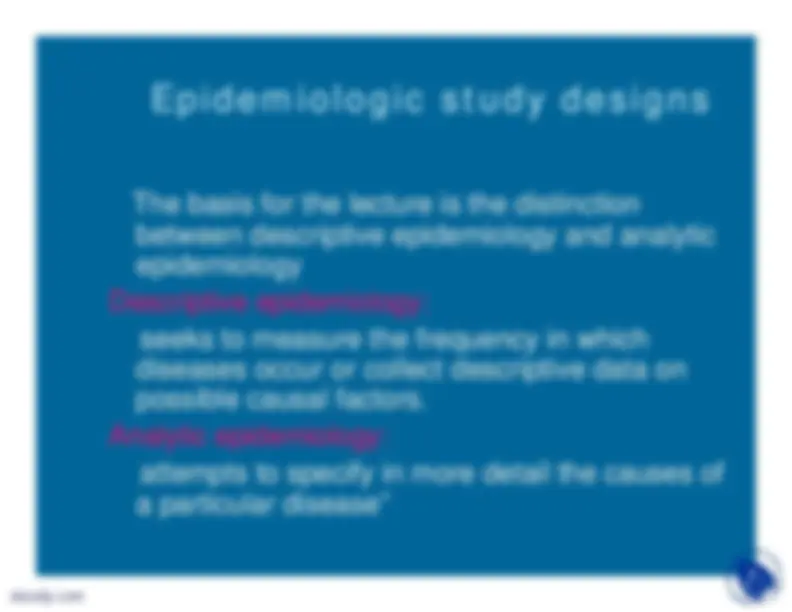
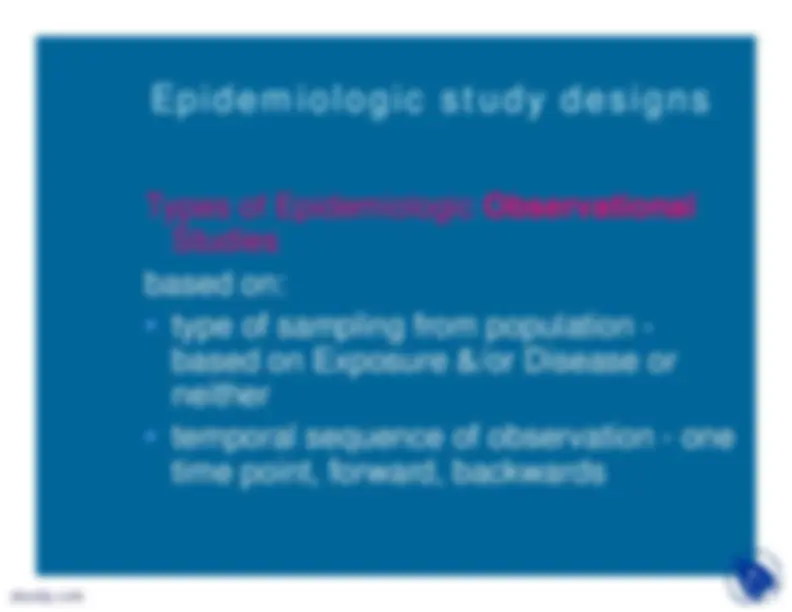
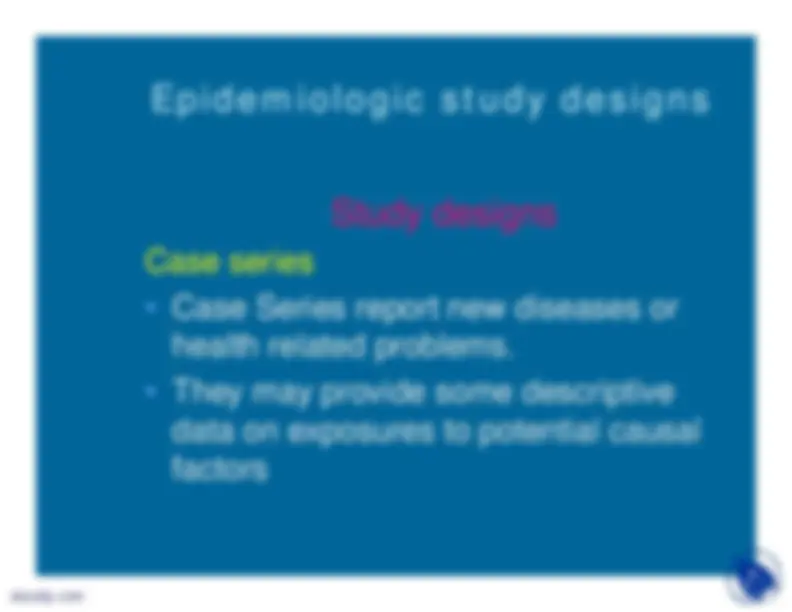
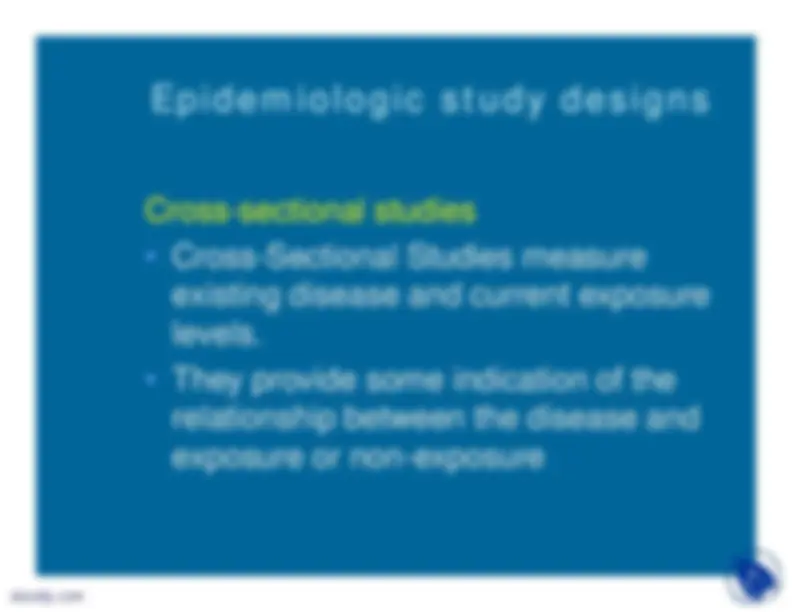
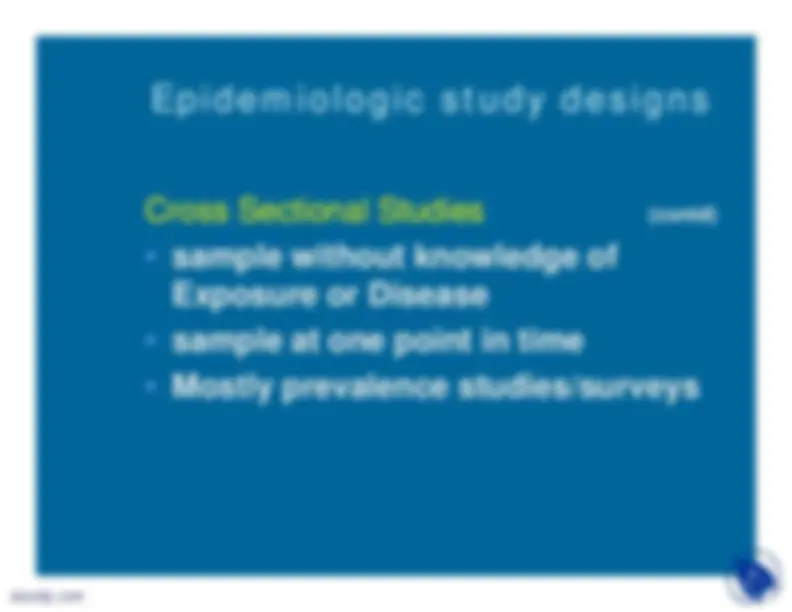
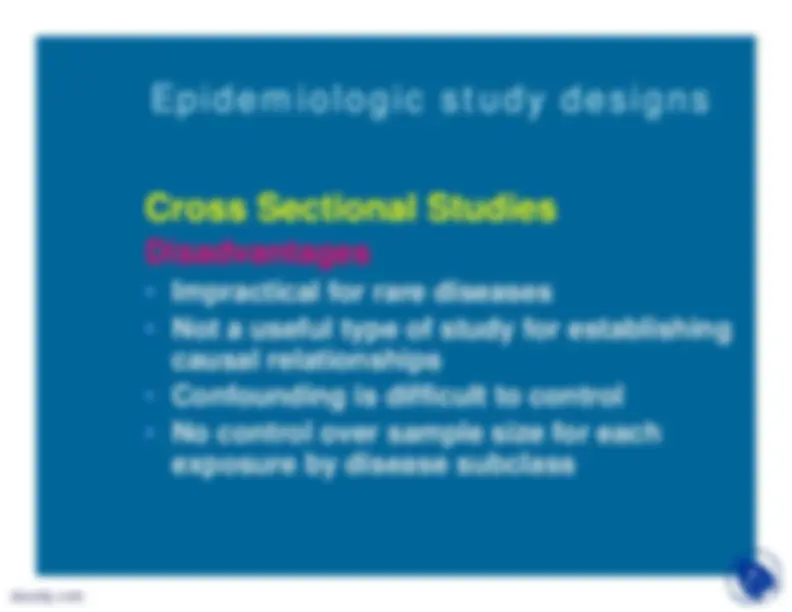
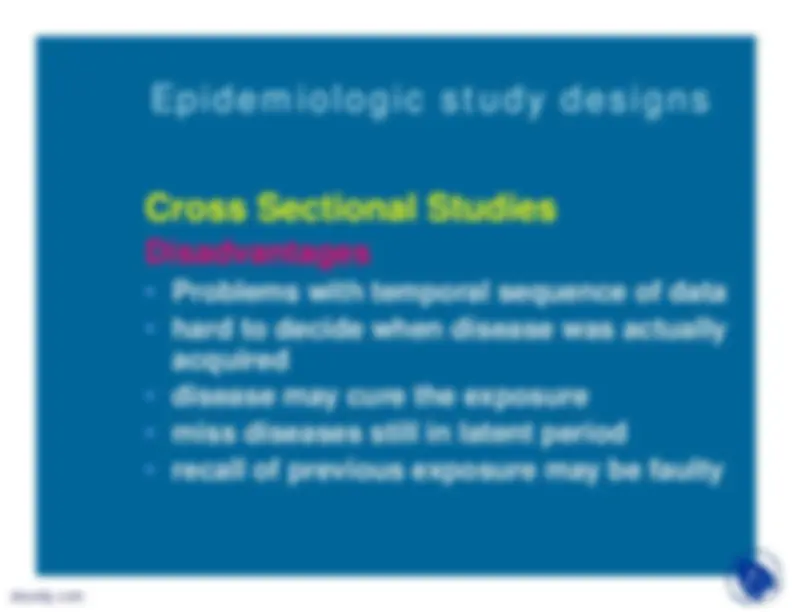
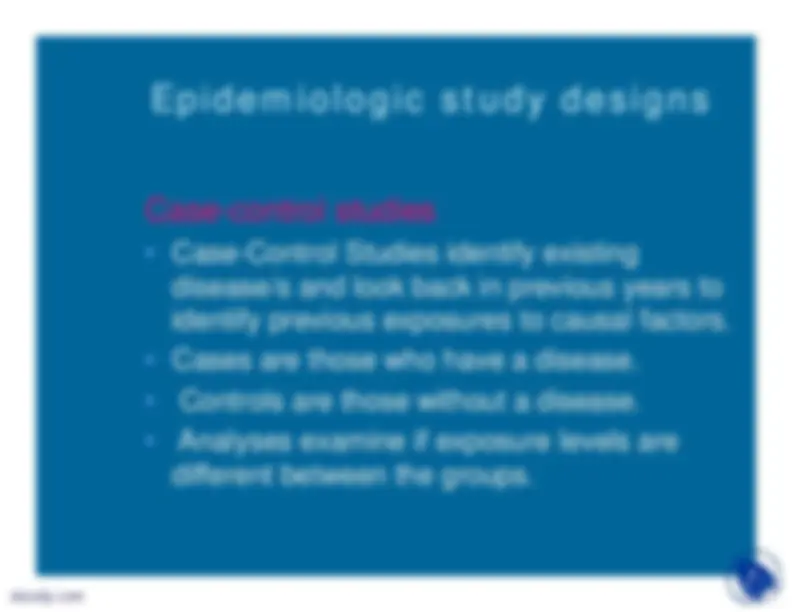
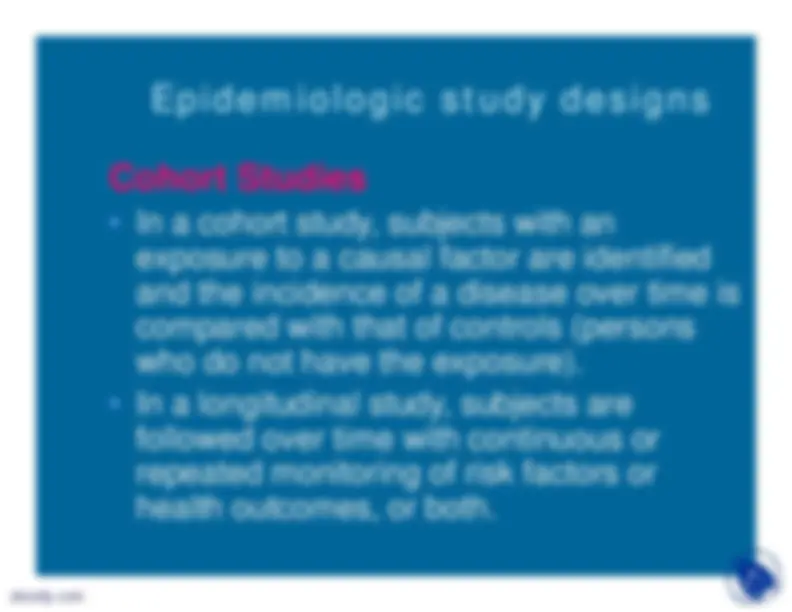
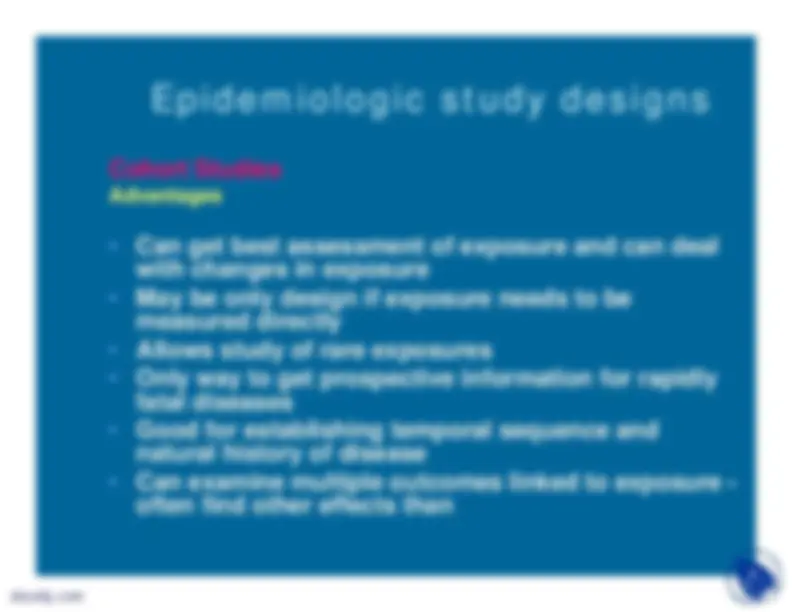
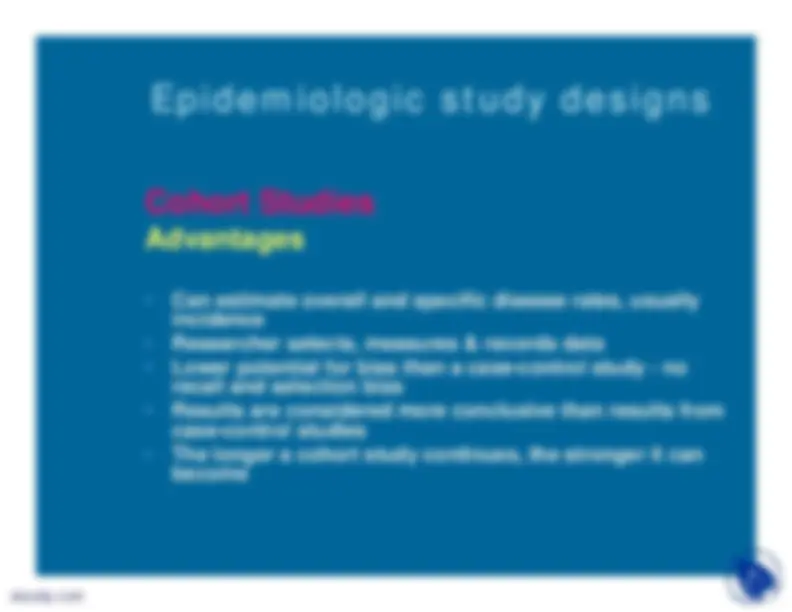
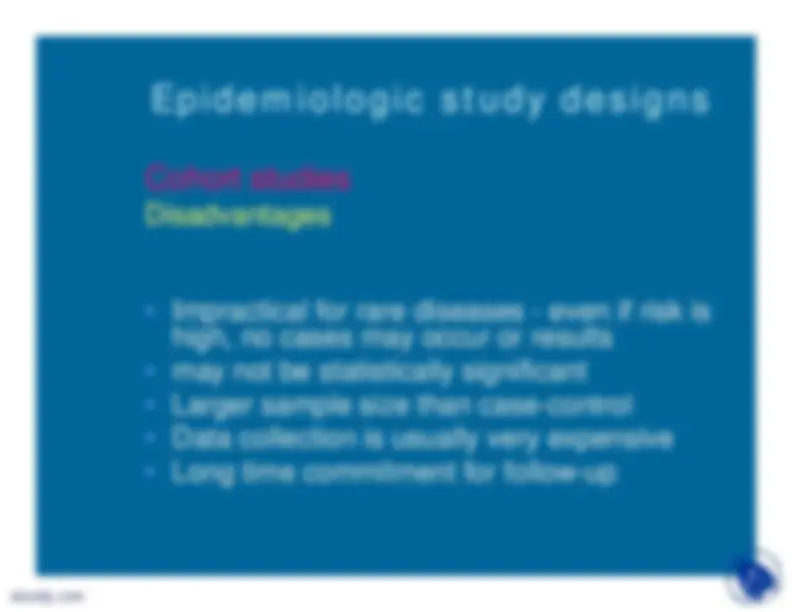
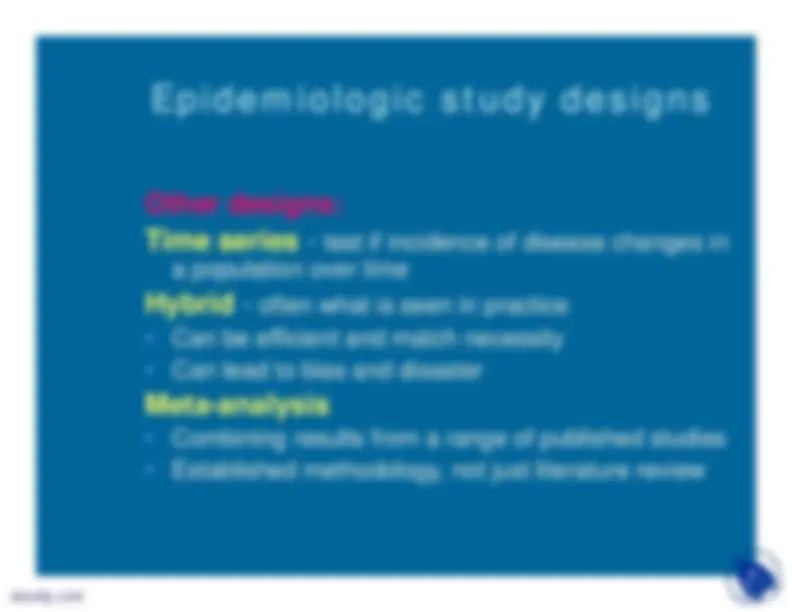
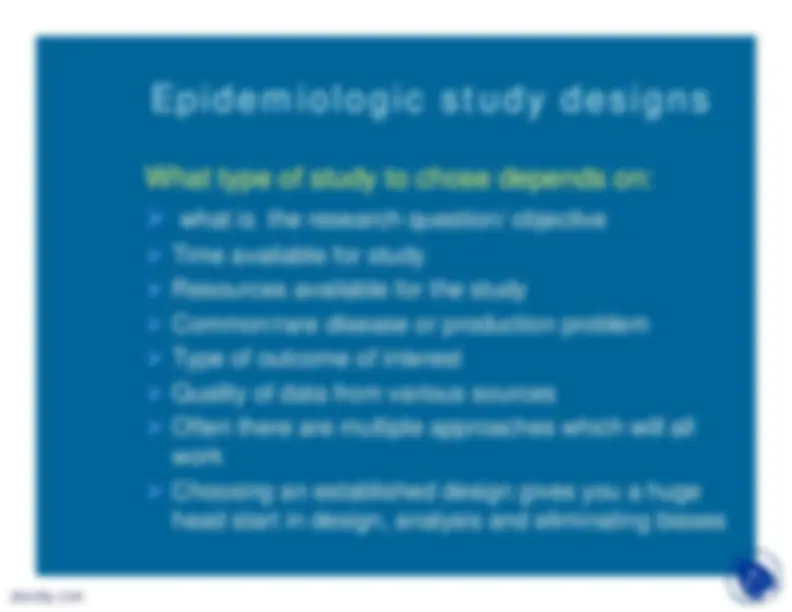


Study with the several resources on Docsity

Earn points by helping other students or get them with a premium plan


Prepare for your exams
Study with the several resources on Docsity

Earn points to download
Earn points by helping other students or get them with a premium plan
Community
Ask the community for help and clear up your study doubts
Discover the best universities in your country according to Docsity users
Free resources
Download our free guides on studying techniques, anxiety management strategies, and thesis advice from Docsity tutors
This lecture belongs to lecture series on Health. Almost all topics related to health are covered in this course. Key points in this lecture are: Epidemiologic Study Designs, Descriptive Epidemiology, Analytic Epidemiology, Types of Epidemiologic Observational, Types of Studies, Cross-Sectional Studies, Case-Control Studies, Cohort Studies, Hybrid, Met
Typology: Slides
1 / 23

This page cannot be seen from the preview
Don't miss anything!
















Epidemiologic study designs The basis for the lecture is the distinctionbetween descriptive epidemiology and analyticepidemiology Descriptive epidemiology:
seeks to measure the frequency in whichdiseases occur or collect descriptive data onpossible causal factors. Analytic epidemiology:
attempts to specify in more detail the causes ofa particular disease”
Epidemiologic study designs Types of Epidemiologic
Epidemiologic study designs Factors Important in Study DesignA. Specific, testable hypotheses - NOT a
Epidemiologic study designs
Study designs
Epidemiologic study designs Cross Sectional Studies
(contd)
-^
-^
-^
Epidemiologic study designs Cross Sectional Studies
(contd)
Good design for hypothesis generation
-^
Can estimate overall and specific diseaseprevalence and sometimes rates
-^
Can estimate exposure proportions in thepopulation
-^
Can study multiple exposures or multipleoutcomes or diseases
Epidemiologic study designs Cross Sectional StudiesDisadvantages •^
Impractical for rare diseases
-^
Not a useful type of study for establishingcausal relationships
-^
Confounding is difficult to control
-^
No control over sample size for eachexposure by disease subclass
Epidemiologic study designs Cross Sectional StudiesDisadvantages •^
Problems with temporal sequence of data
-^
hard to decide when disease was actuallyacquired
-^
disease may cure the exposure
-^
miss diseases still in latent period
-^
recall of previous exposure may be faulty
Epidemiologic study designs Case-control studiesAdvantages•^
Best design for rare diseases
-^
Can be accomplished quickly since events ofinterest have already occurred
-^
Can study several potential exposures at thesame time
-^
Lends itself well to hospital-based studiesand outbreaks
Epidemiologic study designs Case-control studiesDisadvantages•^
Problems with temporal sequence of data
-^
Hard to decide when disease was actuallyacquired
-^
Disease may cure the exposure
-^
Miss diseases still in latent period
-^
Can’t calculate incidence, populationrelative risk or attributable risk
-^
HIGH potential for bias
Epidemiologic study designs
Cohort StudiesAdvantages •^
Can get best assessment of exposure and can dealwith changes in exposure
-^
May be only design if exposure needs to bemeasured directly
-^
Allows study of rare exposures
-^
Only way to get prospective information for rapidlyfatal diseases
-^
Good for establishing temporal sequence andnatural history of disease
-^
Can examine multiple outcomes linked to exposure -often find other effects than
Epidemiologic study designs Cohort StudiesAdvantages •^
Can estimate overall and specific disease rates, usuallyincidence
-^
Researcher selects, measures & records data
-^
Lower potential for bias than a case-control study - norecall and selection bias
-^
Results are considered more conclusive than results fromcase-control studies
-^
The longer a cohort study continues, the stronger it canbecome